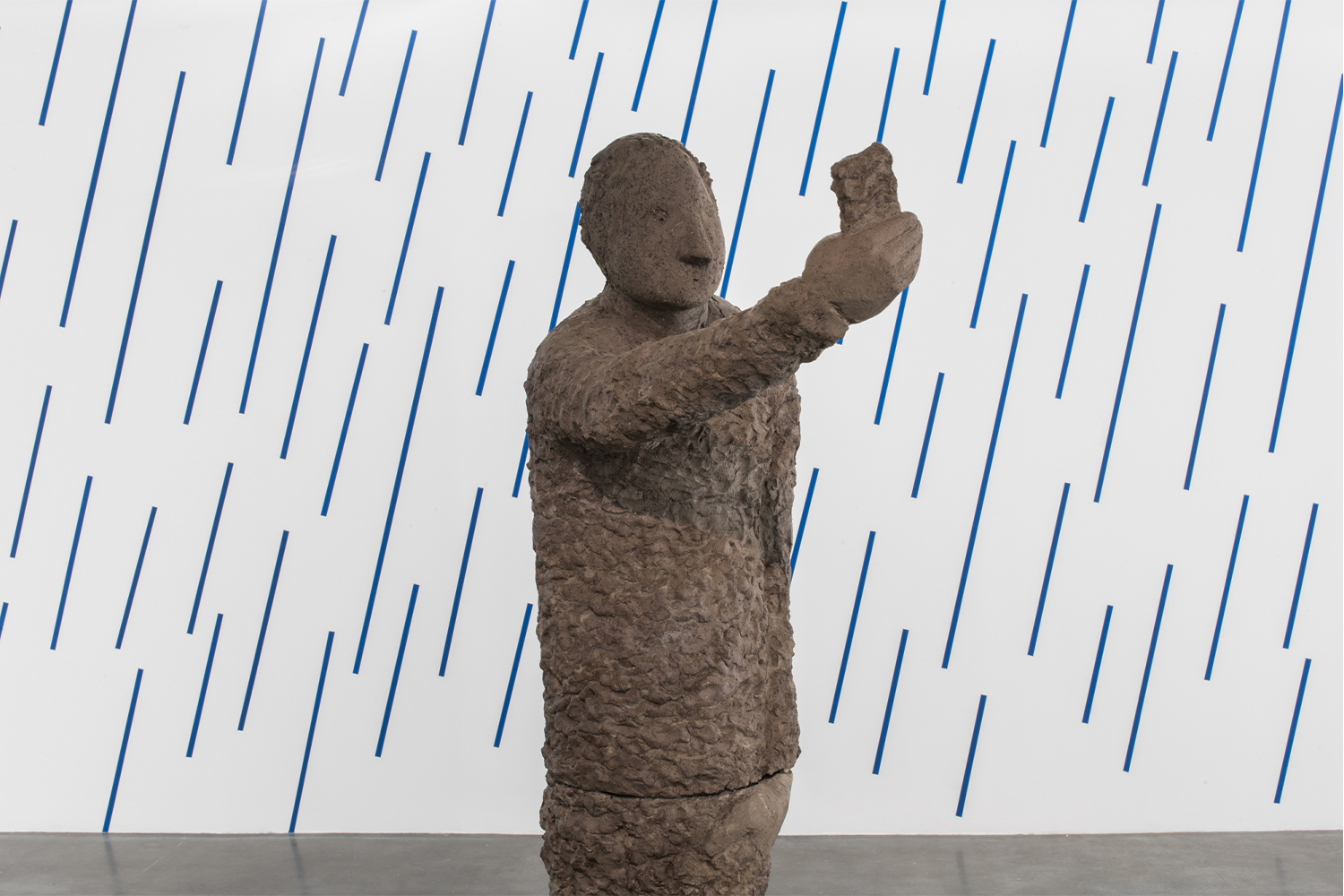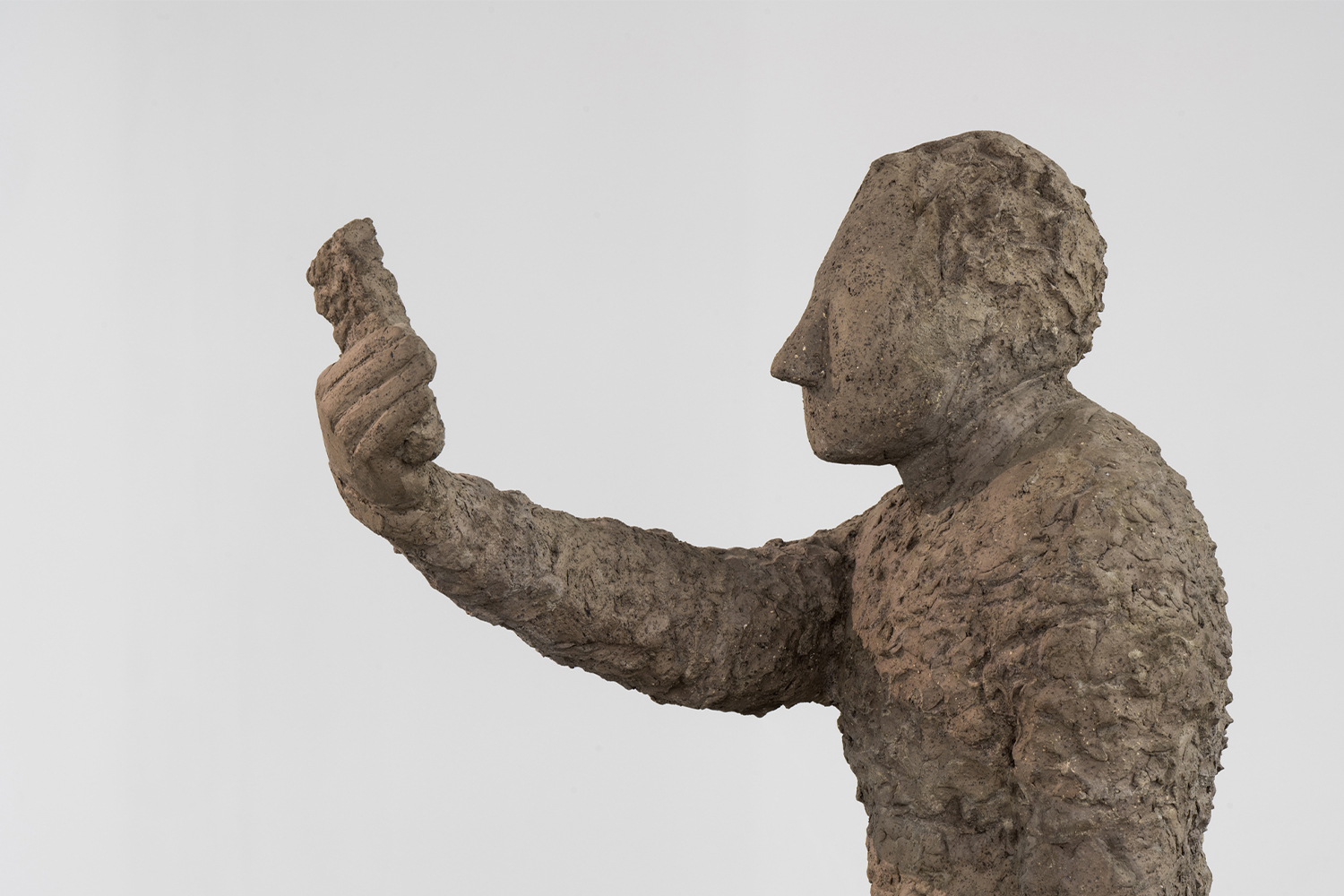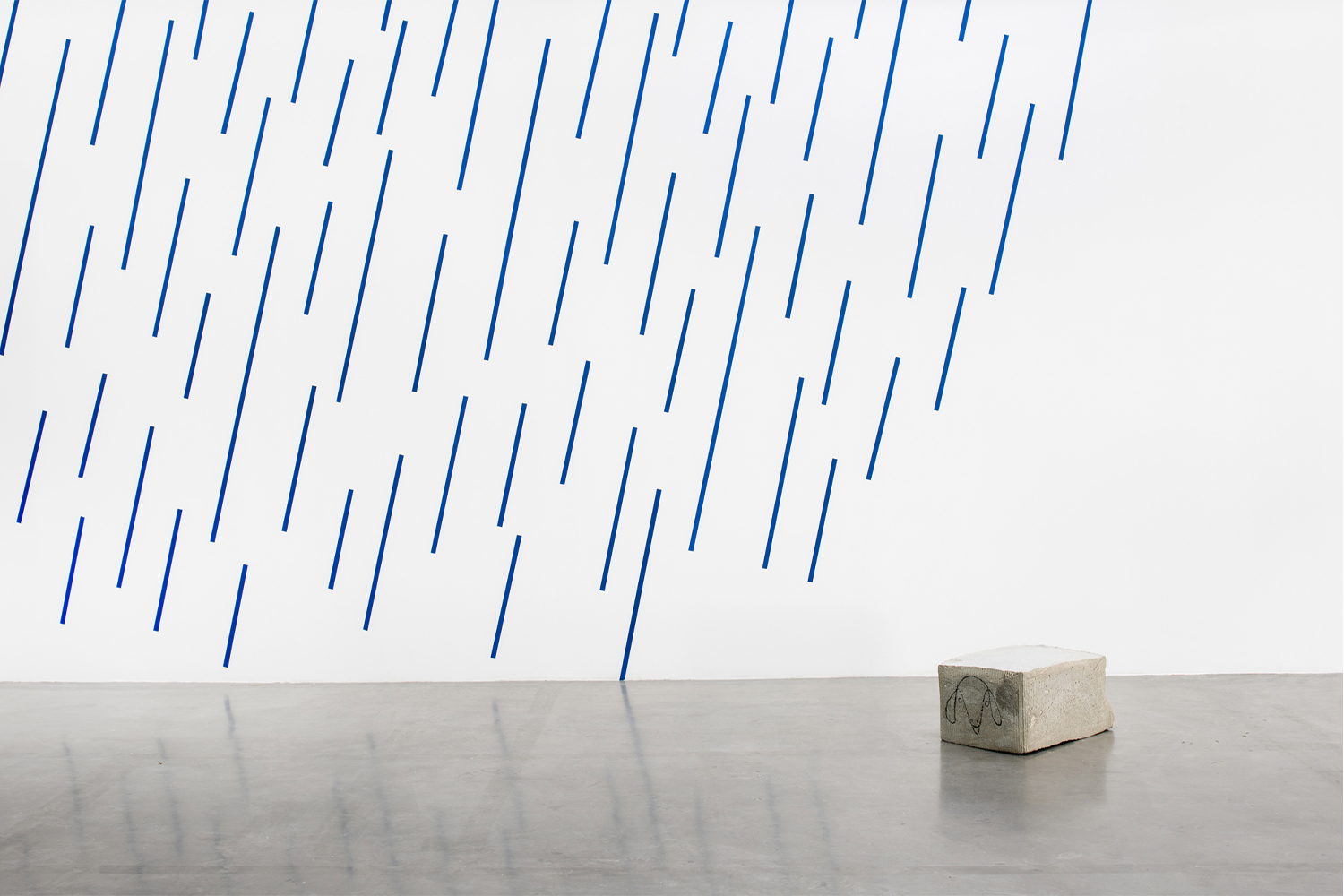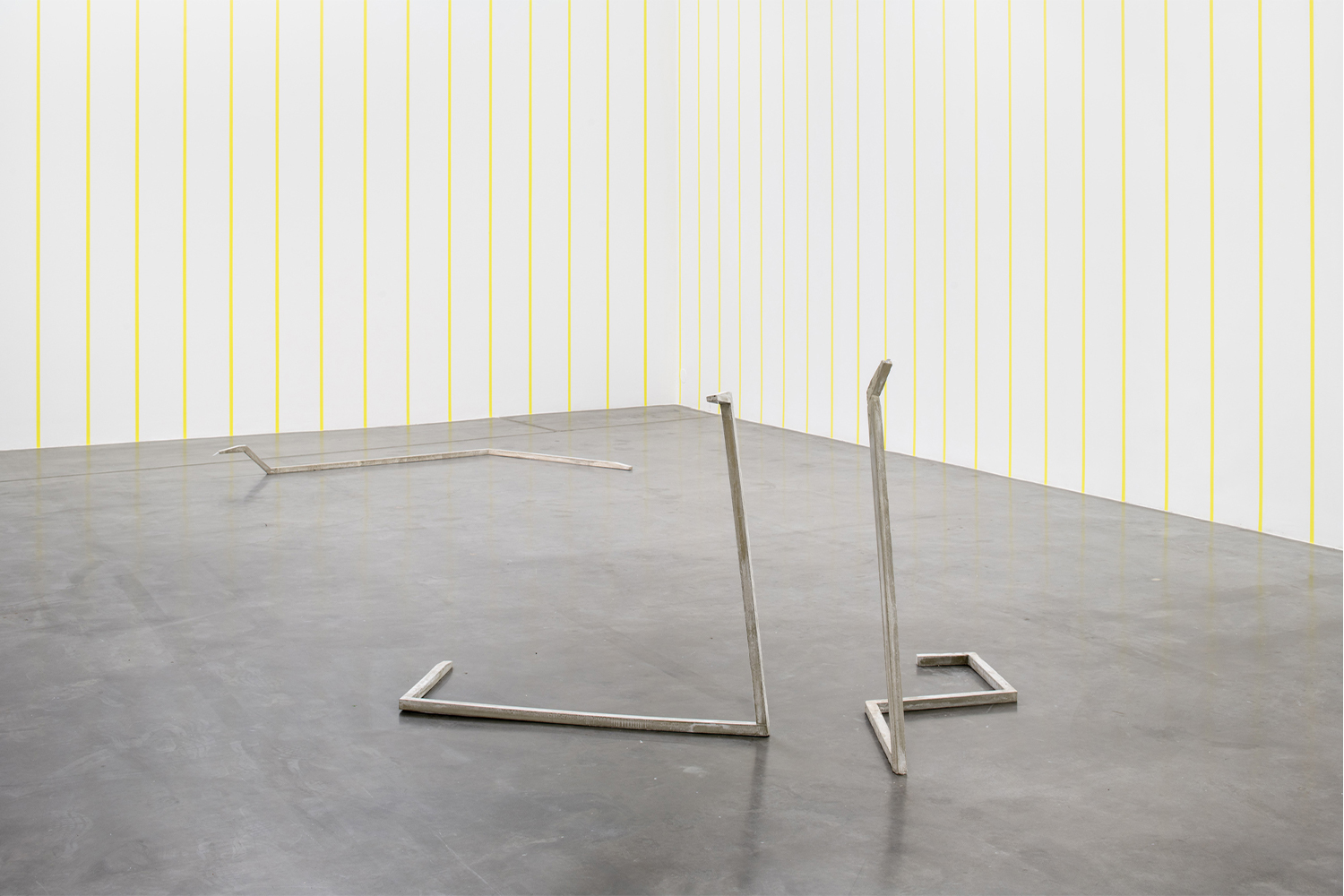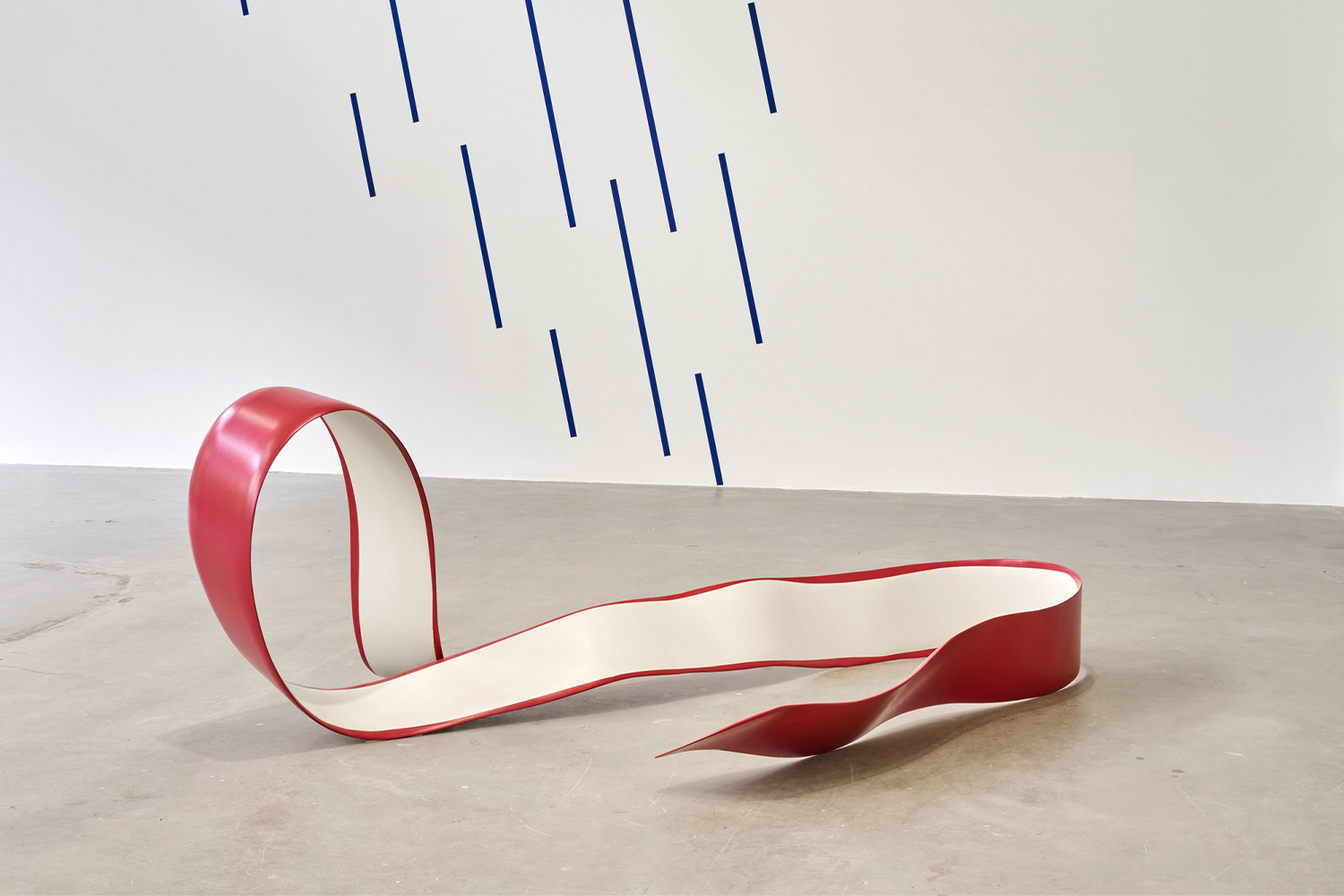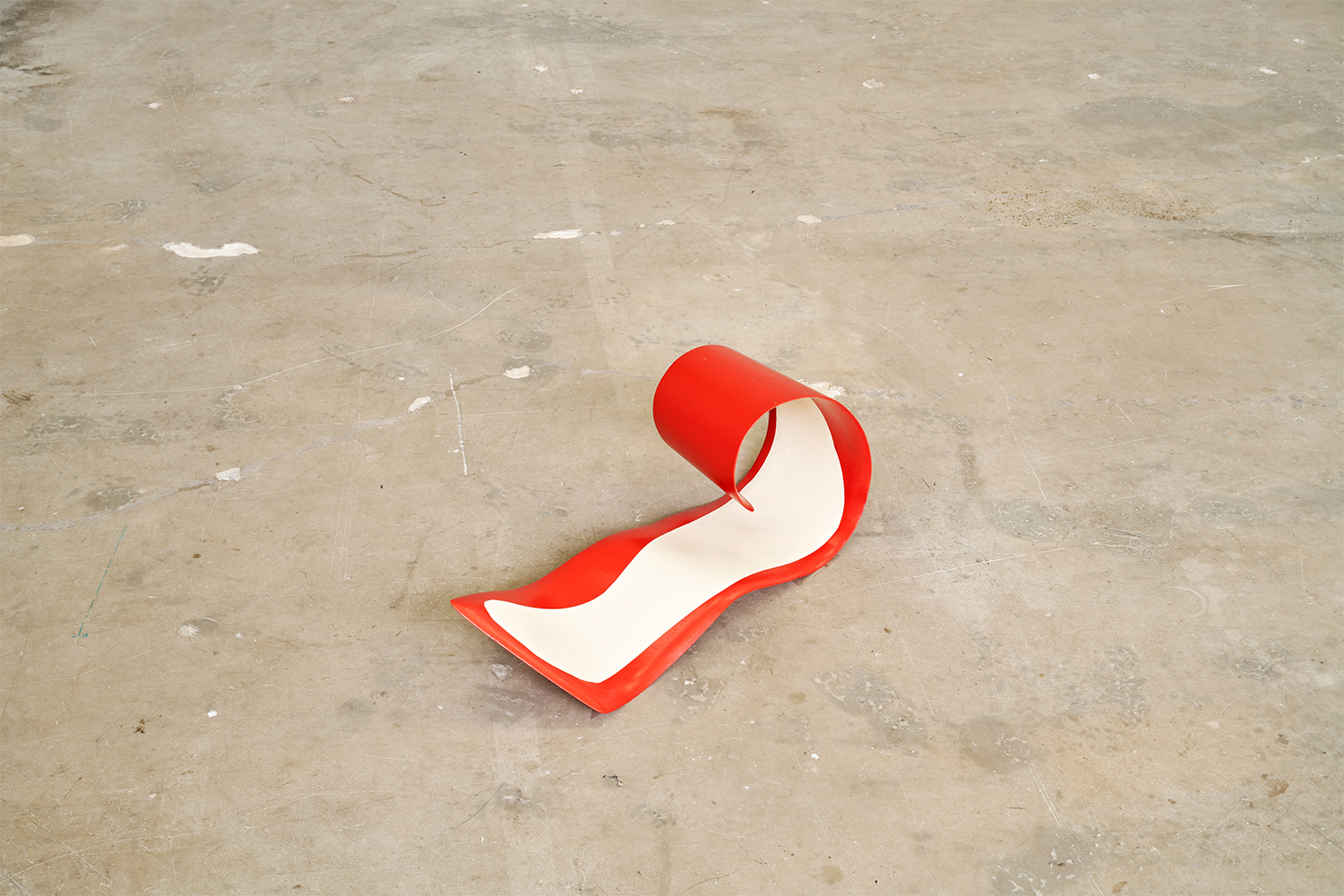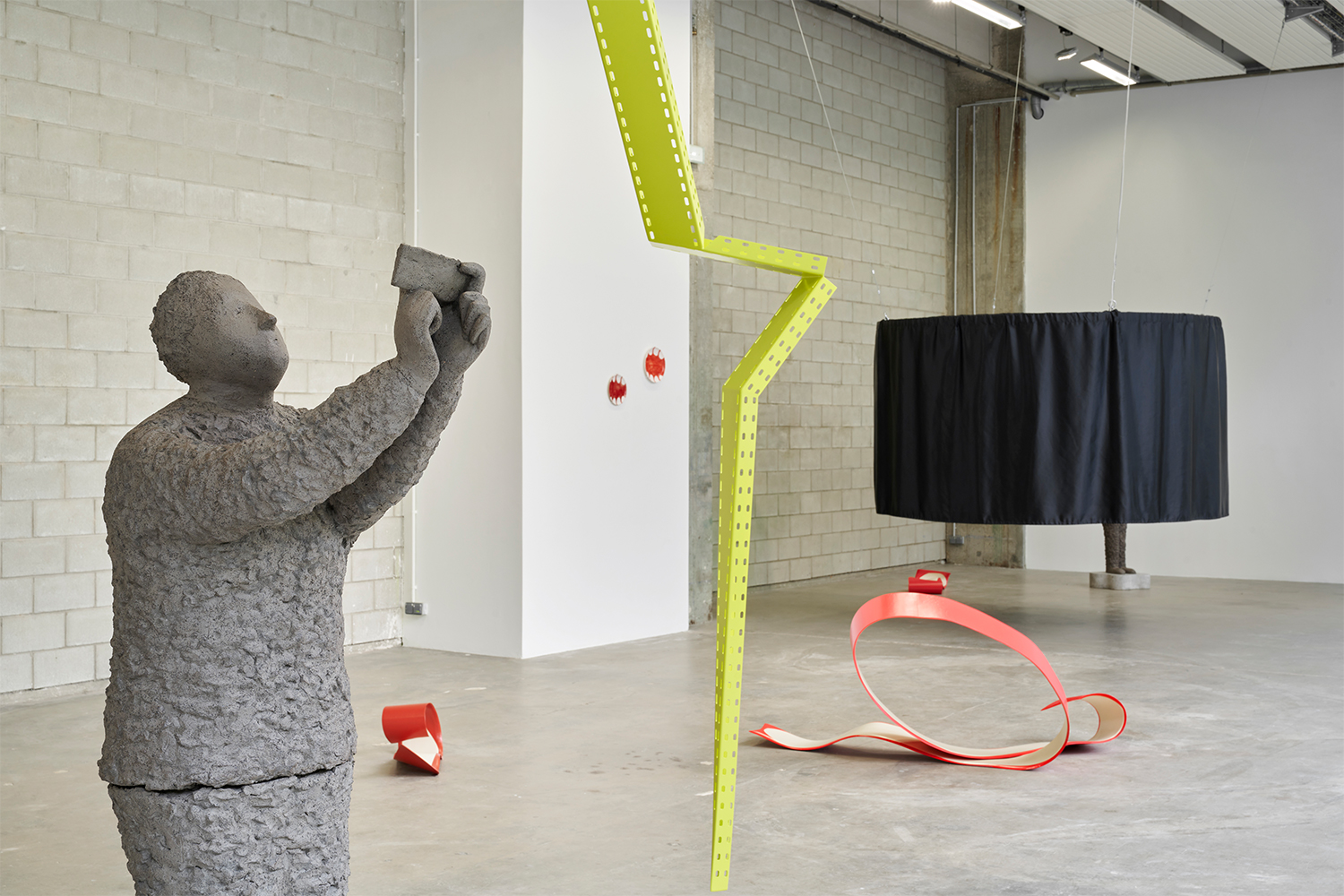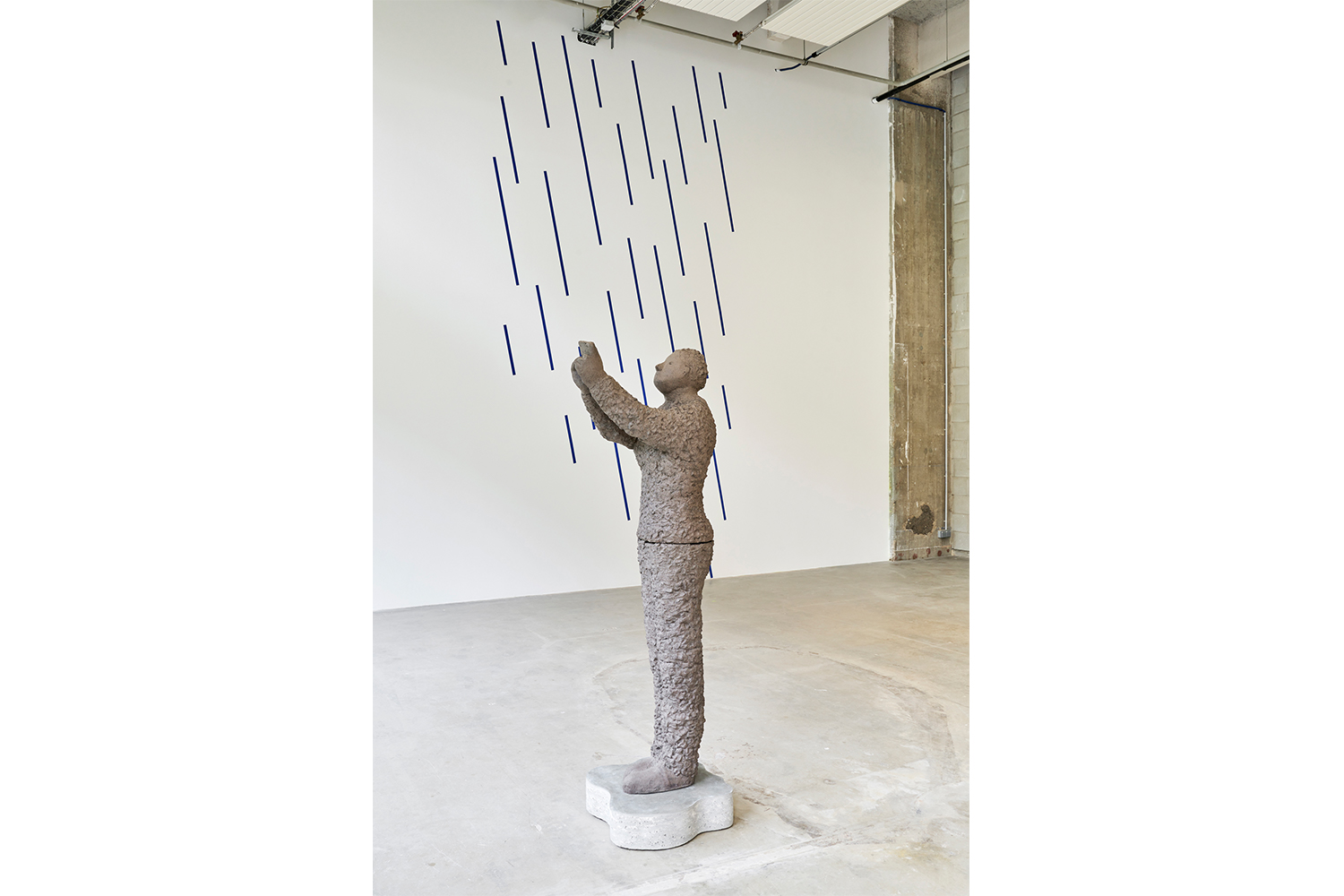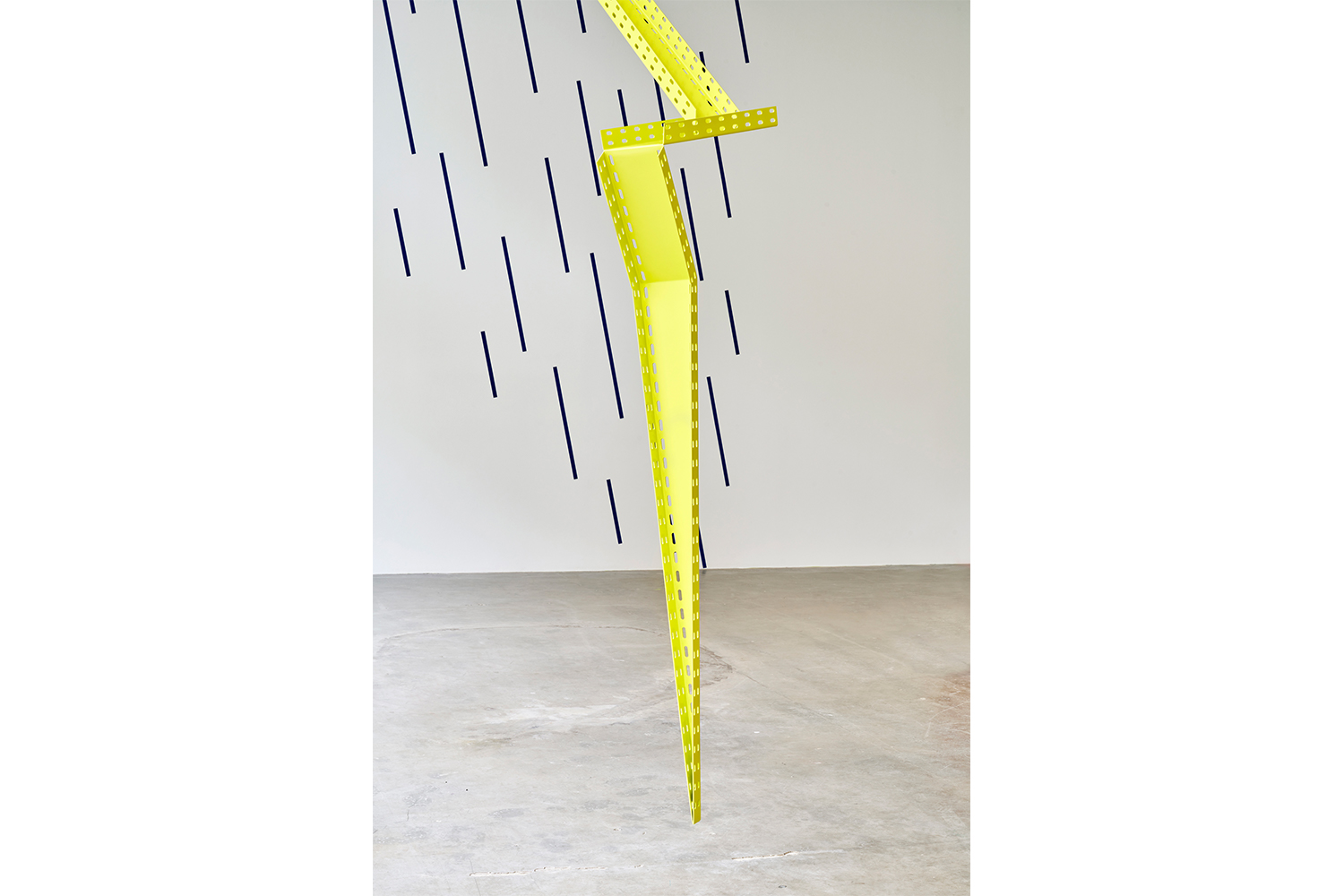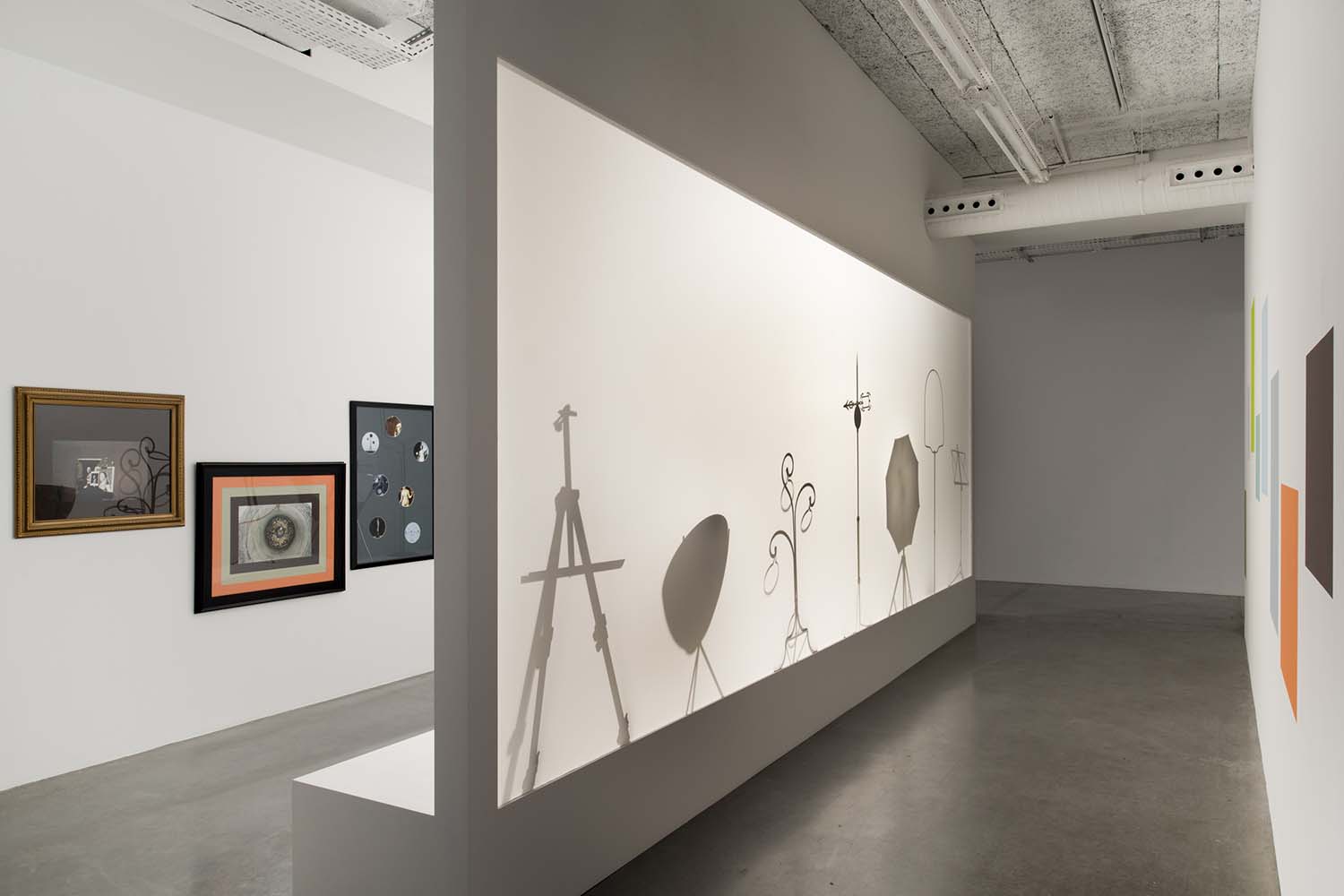I have already had occasion to write a few words about Judith Hopf’s double exhibition “Energies” in my round up of institutional exhibitions during Paris+ par Art Basel. At the time, I pointed out that it seemed to me to constitute a sort of antidote or counter-echo to the prevailing trend toward gigantism and spectacularism (regardless of the quality of the programs concerned and their “French touch”). Indeed, “Energies” updates a philosophical critique of the crisis we are going through — of our lifestyles, of art as a space and as a market — and incites us to take a step back and look critically at our own habits. This position is embodied formally in the exhibition, both parts of which have a retrospective dimension. In it, recent works are mixed with older ones in a double movement of repetition and reprise, according to a principle of serial iteration that is at the heart of Hopf’s way of working. This also corresponds to the economy of means that she practices for ethical and ecological reasons. Hopf, who is versed in critical theory, here defines energy from both a technical and philosophical point of view: as that which powers our technological devices or recharges our own batteries, and as what we spend or lose, especially when using these devices. Beyond the subject matter, the artist’s formal renewal offers a breathtaking journey, and the exhibition provides a punctual overview to her work as a whole.
Hopf has composed what I would call philosophical or mental landscapes, made up of stylized two- and three-dimensional elements that have a figurative basis limited to the representation of their characteristic features, through which the visitor wanders. The exhibition at Le Plateau/FRAC Ile de France focuses on the process of creating energy. As understood in a technical, and perhaps also a psychological, artistic, or political sense, it draws on the repertoire of nature — but a nature updated by the transformation it undergoes in order to produce energy. In a stylized bucolic landscape, symbolized by a two-and-a-half-meter-high blade of grass in painted metal, Untitled (Grashalm) (2020), raised up like a totem, and by Flock of Sheep (2014) — five rectangular volumes in cement and polyester molded in cardboard and set on iron rods with a few additional figurative elements drawn in charcoal on each — a set of three sculptures in silk-screened metal, Untitled (Solar Panel) #1, #2, and #3 (all 2022) feature solar panels augmented with circular holes. In the midst of this vast mental landscape that evokes the energizing effect of country strolls, they capture the stylized rays of sunlight from the murals Shifts of Sunlight #1, #2, and #3 (all 2022), or energy from the rain (Rain #2, 2022). In this magnificent philosophical setting, an anonymous human-scale clay figure, whose apparent sculptural materiality is derived from the manual dimension of its creation in successive layers in a self-performative quasi-improvisation carried out by Hopf during the 2020 crisis, Phone User 2 (2021) holds up at arm’s length in its right hand in front of its face a mobile phone to photograph the landscape, in a gesture that also seems to capture energy or to be looking for a signal. Like (Solar Panel) #1, #2, and #3, it is affixed to a concrete base in the shape of a cloud that evokes “the cloud” that links man and technological tools to data, also materializing energy flows — the energy the Cloud provides and that it takes away, in both technical and philosophical senses. These pedestals constitute a gesture of formal renewal as well as a critical return to sculptural sources, and through their form they interrogate the essence of sculpture itself, as well as the future of humanity.
This mental landscape and these three-dimensional works echoe the video Less (2022) and its performative dimension. In an idyllic country landscape, a photovoltaic agricultural installation appears, and a figure slowly replaces some of its elements with their sculptural counterparts, augmented with holes. In a quite anthropic development, some snails that might also have been introduced by a human figure stroll amid the sculptures in a kind of “retour à la nature.”
Reiterating the figure of the solar panel, a stylized pictorial fresco, Roofs (2022), depicts a landscape of red roofs adorned with these panels. In this last exhibition room, the concept of nature, or perhaps the anthropic, emerges in the form of The Sumac Tree Branch that Looks Like a Cherry Tree Branch (2021), a cast bronze tree branch that seems to spring up through a wall from the outside. In this urban-rural landscape, Phone User 3 (2021) remains hardly seen, as it stays at the periphery, like the character in Hopf’s emblematic short film Some End of Things: The Conception of Youth (2011), featured in the same room. Partially encased in a white egg-shaped structure that evokes a human-sized chicken egg, he collides with the structure of an ultra-modern building, the final door of which, despite his repeated efforts, he is unable to pass through after his long wandering traversal of the ensemble. Beyond its burlesque character, this emblematic short film undoubtedly evokes the difficulty that nature, or man’s “natural” aspect, has in making a place for itself in the chill universe of ultra-modernity.
To Hopf, the Bétonsalon section of the exhibition symbolizes the social use we make of this energy, and the energy we expend through our compulsive exchanges with others — whether in real life or virtually, as elaborated in the video Less /contrat entre les hommes et l’ordinateur (2022), which forms a counterpoint to Less, shown at the Plateau/Frac Île-de-France. To some extent, this part of the exhibition is built as an antithesis to its counterpart.
As a vantage point materializing both the meaning of the exhibition and the link that unites its two parts, Phone User 5 (2021) holds up its phone with both hands and seems to be photographing visitors through the window — unless it is photographing itself. The interaction between it and the visitor who may in turn be photographing Phone User 5 from outside, in a subtle game of mirrors and reflectivity, is multiplied by its resonance with Sylvie Fanchon’s installation in the adjacent windows (March 2021–March 2023), on which are inscribed, in the whitewash that covers them, a standard sentence without spaces or punctuation, QUEPUISJEFAIREPOURVOUS [whatcanIdoforyou], borrowed from the logos of a standardized AI. This mise en abyme undoubtedly expresses the vacuity of the gesture that we are constantly making while unaware of the energy we are expending, in every sense of the word, in a self-perpetuating, exponential emptiness, and leads to a critical distancing of our own habits.
In this desolate, arid, and magnificent mental urban landscape, where raw concrete, steel, and glass constitute the only décor, five medium-sized sculptures depicting apple peels, Rest (Apple peel) 1 to 5 (2021), are scattered on the ground. They materialize the reuse of materials that Hopf’s work makes systematic, as well as the economy of means and the exploration and renewal of the formal field that characterizes her art. A rounded structure suspended from the ceiling by cables and covered by a circular black fabric curtain, Flying Cinema (2022), affords a closed space for spectators of the short film, meanwhile leaving their legs visible, transforming visitors into new, anonymous characters of the exhibition. Looking busy not looking at them, Phone User 4 (2021) contemplates its phone and perhaps the photograph that another Phone User may have sent. Here, the three-dimensional lightning bolt painted in yellow, which seems to spring from the false ceiling that conceals the space’s technical wiring, Lightning (2022), and the rain traced on the wall, Rain (2022), are the only signs of nature.
In these philosophical/mental landscapes that reinvent figurative sculpture and pictoriality, the characters engage with their doubles — ourselves. From a formal point of view, Judith Hopf’s work escapes all possibility of classification by taking a hyper-figurative, even demonstrative, route to represent ideas of a philosophical nature.

